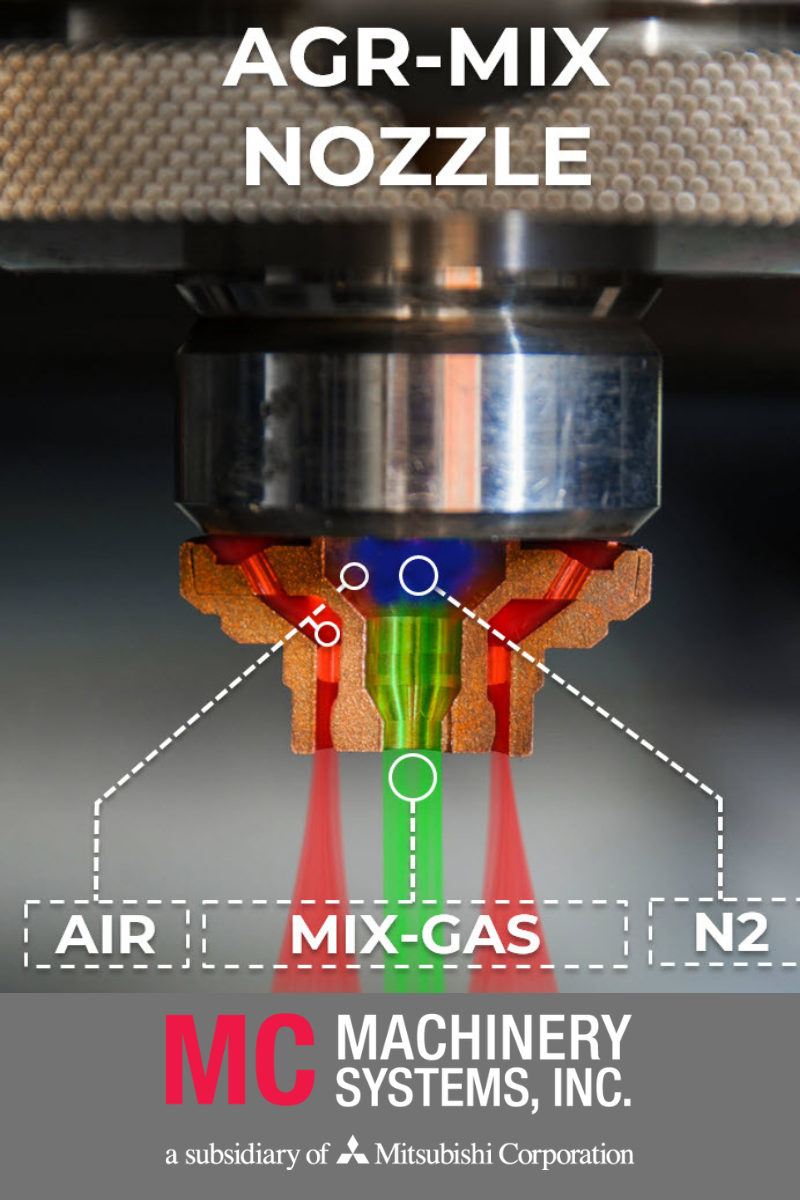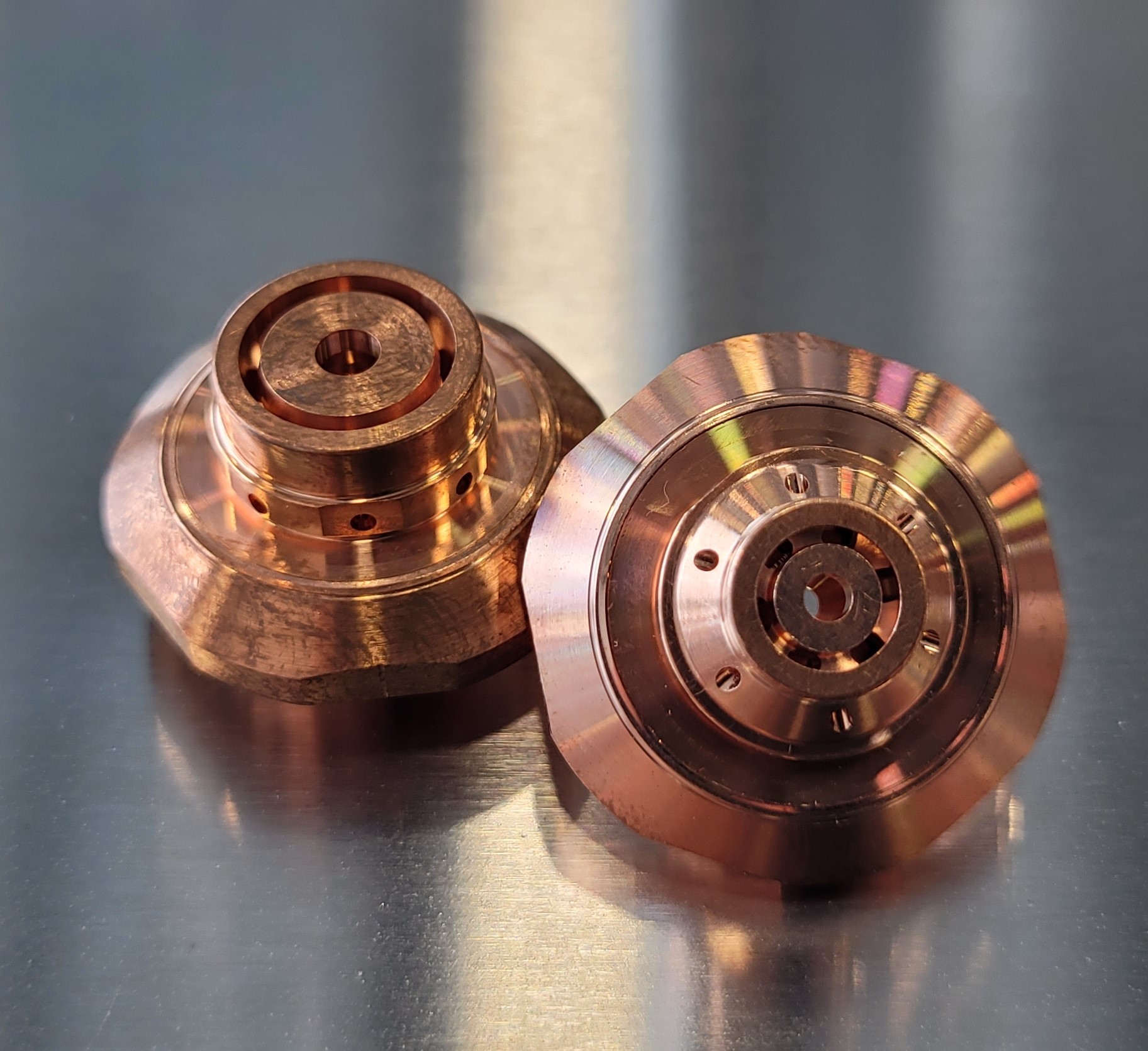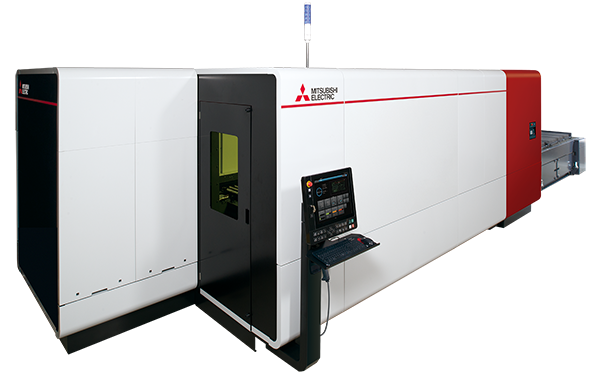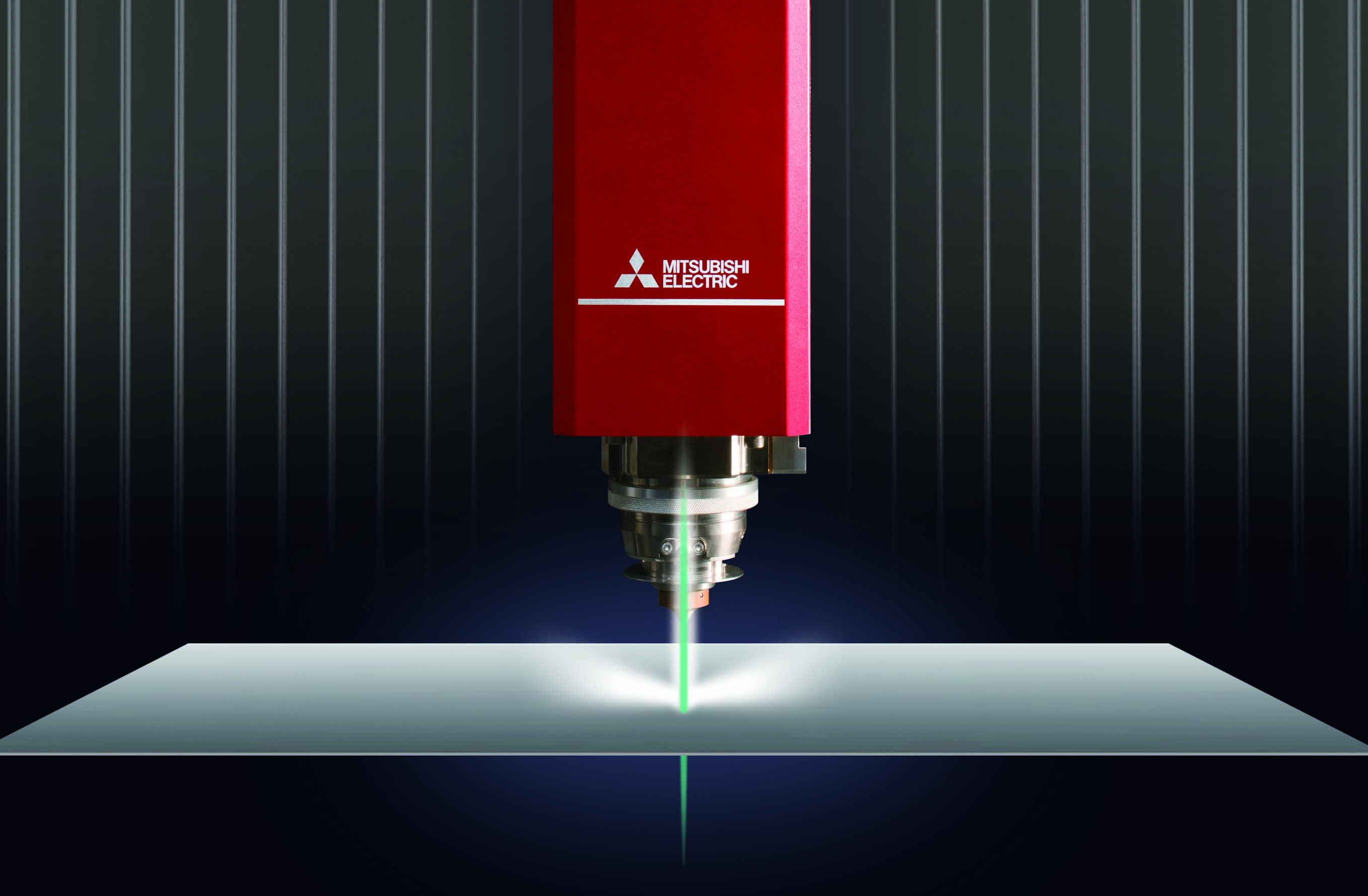A new patented gas- and burr-reduction technology is now available for the Mitsubishi GX-F ADVANCED Series of AI-enabled fiber lasers, improving cut quality while reducing gas consumption when cutting mild steel.
And Mitsubishi Laser’s proprietary AGR-MIX nozzle technology does not require external blending tanks or high-pressure oxygen.
By combining low-pressure air with nitrogen within the nozzle, a blended gas is created that can be easily adjusted based on material type.
“This blended gas not only minimizes or eliminates burr in mild steel, it also reduces gas consumption without the use of any external blending tanks or high-pressure oxygen,” said Mitsubishi Laser Product Manager Ryan Conroy. “This saves both money and space.”
To develop AGR-MIX, Mitsubishi Laser built on its no-contact AGR (Assist Gas Reduction) nozzle technology, which reduces nitrogen-assist gas consumption by up to 75 percent. The new AGR-MIX technology can reduce it even further—up to 50 percent more.
Since assist gas is a significant expense due to bulk nitrogen costs, Mitsubishi Laser has focused its efforts on advanced gas-reduction technologies, including AGR-N2 (100-percent oxide-free processing while saving up to 75 percent on nitrogen assist gas consumption) and AGR-AIR (extremely cost-effective, 100-percent air cutting), in addition to AGR-MIX.
“These technologies can help decrease nitrogen consumption and make a big dent in the overall annual cost of running a laser,” Conroy said.
The AGR-MIX nozzle is uniquely structured: Nitrogen is funneled to the center of the nozzle in an air shroud, while a separate chamber funnels some of that air into the nitrogen stream. This produces a mix gas that is made up of about 95 percent nitrogen and 5 percent oxygen.
Mitsubishi Laser customers who have been using the new AGR-MIX technology are reporting high-volume processing with perfect stability and excellent cut quality, Conroy said.
There is an additional bonus—the wider kerf that mix gas provides makes removing parts (especially thick parts) from skeletons easier.




